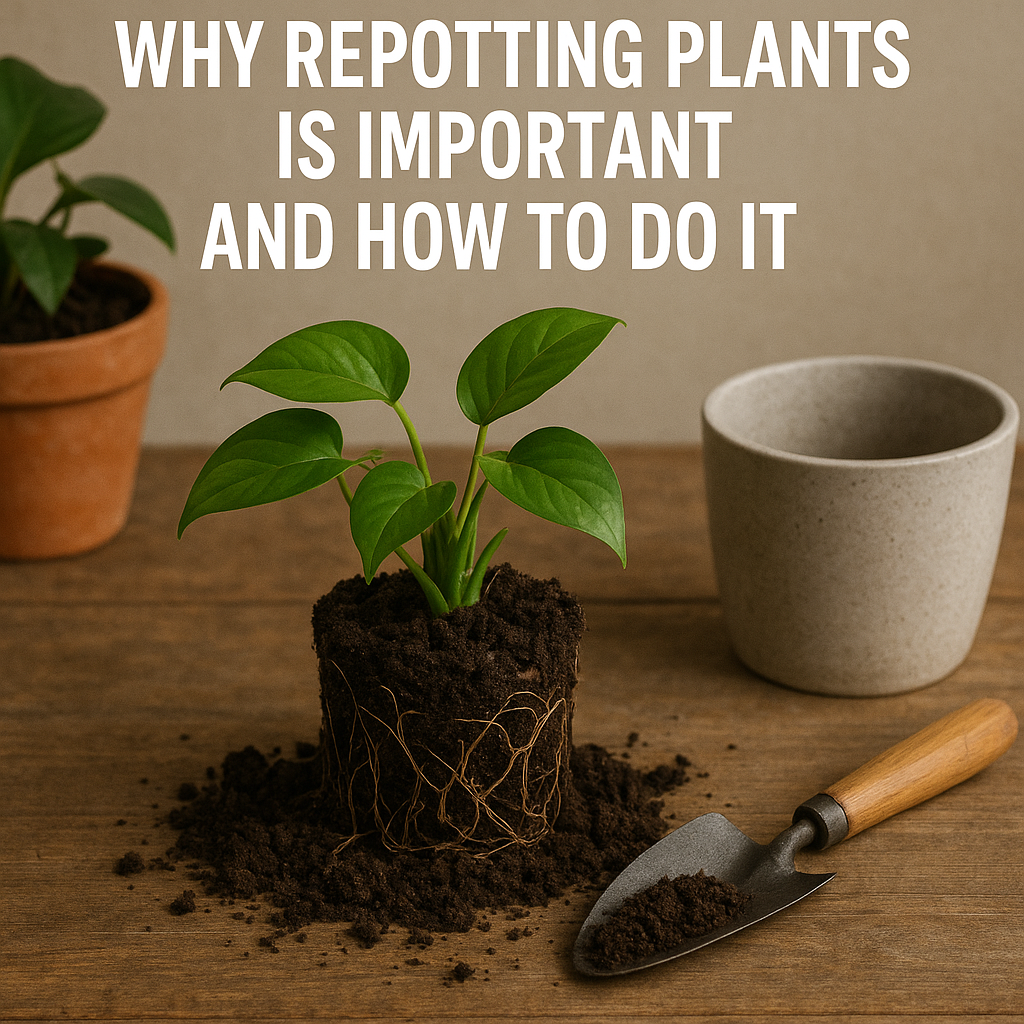Repotting is a key part of plant care that many beginners overlook. Over time, plants outgrow their containers, and their roots need more space and fresh soil. Repotting keeps your plants healthy, encourages growth, and prevents problems that come from staying in the same pot for too long.
Why Repotting Matters
- Gives roots more space: Prevents plants from becoming root-bound.
- Refreshes soil: Adds nutrients and improves drainage.
- Prevents disease: Old soil can hold pests or fungus.
- Encourages growth: A bigger pot gives plants energy to thrive.
Signs Your Plant Needs Repotting
- Roots growing out of drainage holes.
- Soil dries out quickly after watering.
- Slowed or stunted growth despite good care.
- Plant looks too large for its pot.
When to Repot
- Best time: Spring or early summer, during the plant’s active growth season.
- Avoid winter: Plants rest during this time and may struggle to adapt.
Step-by-Step Guide to Repotting
1. Choose the Right Pot
- Select a pot 2–3 cm (about 1 inch) larger than the current one.
- Make sure it has drainage holes.
2. Prepare Fresh Soil
Use soil suited for your plant type:
- Cactus and succulents: Well-draining mix.
- Tropical plants: Rich, moisture-retentive soil.
3. Remove the Plant
- Gently loosen the soil.
- Turn the pot sideways and slide the plant out, supporting the base.
4. Trim and Untangle Roots
- If roots are circling tightly, gently tease them apart.
- Trim away any dead or rotten roots with clean scissors.
5. Repot the Plant
- Place a layer of fresh soil at the bottom of the new pot.
- Position the plant in the center and fill around it with soil.
- Press the soil gently to remove air pockets.
6. Water Lightly
After repotting, water just enough to moisten the soil and help roots settle. Avoid overwatering at this stage.
Aftercare Tips
- Place the plant in indirect light for a few days.
- Resume normal fertilizing after 2–3 weeks.
- Monitor closely for signs of stress, like drooping leaves.
Final Thoughts: Giving Plants a Fresh Start
Repotting may seem intimidating, but it’s simply giving your plant a new home to grow in. By watching for signs, choosing the right pot and soil, and handling the roots with care, you’ll keep your plants thriving for years.

